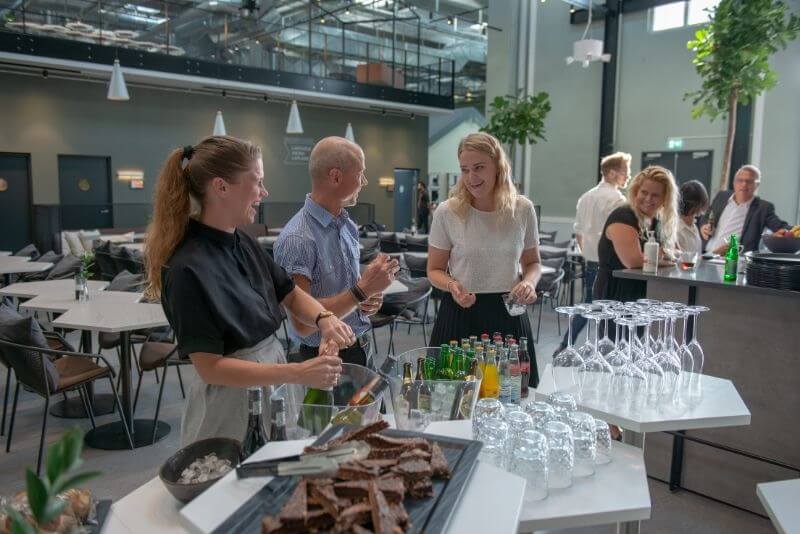Kick-off meeting season is approaching for Autumn 2021. So, let’s talk about kick-offs! What are the different types of Kick-off? What’s the difference between them and what should be the focus for each? How should the day be scheduled for your kick-off?
This article is going to help you
- understand different types of Kickoff: seasonal, project, team kick-off
- learn how to organise one and how to get the most out of your kick-off
- get ideas for your kick-off meeting with the example agenda
Purpose of Kick-off meeting
It’s all about alignment.
Fundamentally, all kick-off meetings are about alignment, which means to join a group that is supporting or opposing something. It is important to understand the different types and different priorities of each to get the most out of everyone’s time. Let’s go over them one by one!
Three types of Kick-off meeting:
1. Project kickoff: A chance to unite the project team, set the tone
Project kick-off marks the official start of the new project or a phase in a bigger project. There are more and more collaborative projects today, hence, the most common out of three types.
It can be both an external and internal meeting
Internal project kickoff happens more often in bigger companies. It is an opportunity to get everyone acquainted at the start of the project, as some of your project team members may not have previously worked together. Agree on clear deliverables and project milestones. When external, often it is the first time a company meets the client(or a team) in person as well as all the important stakeholders. It is an important chance to build a common understanding of the project to operate from the same page.
During the meeting, you should focus on the goals below:
- Align everybody’s understanding of the project with the same level of information
- Align the expectations from both sides, setting priorities to start.
- Make decisions on things such as how to work together (how will we communicate, how often we meet, Set the project timeline, check risks, etc.). After this meeting, it’s about the executions.
Make sure to cover:
- Introductions including the goal of today’s meeting (refer to the focus areas above)
- Project background
- Project purpose: what are the deliverables? Make it measurable
- Project Plan: clear milestones and a timeline, regular meeting schedules,
- Roles: stakeholders, execution, decision-makers, accountability
- Questions
2. Seasonal kick-off: motivate the team for the new season ahead
Usually happens annually or twice a year to well…kick off the upcoming season! It is often at the beginning of the new year(or financial year of the company) or the beginning of each season(e.g. Spring & Autumn). It is often an internal event and could be for the whole company or by department (e.g. Sales team kick-off). It could be a couple-hour event or a whole-day event.
Why should you bother?
When it’s an internal event, it’s easy to brush it aside or opt for sending out an email instead. However, it is a valuable opportunity for the company to reinvigorate everyone for the new year/season! It is also a chance for everyone to come together and celebrate the achievements as a company and start on the right foot (it also helps to put the previous year behind, and focus on what’s ahead, especially if it was a tough year or a season)
During the meeting, you should focus on the goals below:
- Motivate staff and lift up the good energy
- Align everyone the goals/ focuses for the new year/season
- Boost the team spirit and strengthen the company culture
3. New Team Kick-off: building trust among the new team members.
You are a fast-growth company with many new team members joining all the time. Team kickoff is a great way for everyone to get to know each other, and make informed decisions about how to work together. Don’t be afraid to incorporate something out of your office, go for an off-site day, or a retreat for the day. It could also involve speeches, breakout sessions or brainstorming sessions, networking opportunities.
During the meeting, you should focus on the goals below:
- Align clearly what everyone’s role is
- Get to know each other, building trust!
- make decisions on things such as how to work together (e.g. how will we communicate, how often we meet)
- Motive, infuse positive energy

Kick-off day-Example Agenda
(Sample Agenda for a Sales Team’s Season Kickoff)
- Duration: afternoon 4 hours + afterwork
- Main parts: Rreview, Learn, Engage, and Motivate
Agenda example
- Lunch (30 mins): Start the day with lunch. Give your team an opportunity to connect and catch up with their colleagues. It is especially important if you have a geographically dispersed team. give them this moment to settle in rather than starting with a serious speech right away
- Introduction (10 mins): When everyone’s gathered in a room, start by welcoming and stating clearly the goals for the day. Quickly introduce the agenda as well as what is expected of everyone.
- Icebreaker (5-10 mins): Instead of diving straight to the agenda, include a quick icebreaker to set the mood and engage your participants. Check out ideas for the best icebreakers!
- Recap of the previous year/season(30mins): It is good to review what has happened the previous season for instance by sharing best practices, figures, etc. You could use this time to highlight and show appreciation for your team’s hard work.
- Break (5-10mins)
- Deep dive – learning (45mins): Share up-to-date info regarding sales strategies, processes, marketing messages etc. You can also use this time to deep dive into new products/services offered in the coming season.
- Break (10mins)
- Engaging (50 mins): Use this slot for the team to share their thoughts, ideas, and suggestions, etc. It is all about engaging the participants. If you have a specific challenge you already know, focus on that topic and get your team’s input. This part can be done in groups (e.g. by regions, by roles & tasks) and other focuses can include the below:
- New product suggestions
- Operational process review
- Challenges
- Ideas on using resources
- Milestones
- Break (10mins)
- Planning (40mins): Focus on converting the ideas discussed in the previous session to participants’ day-to day-tasks. And then to a larger purpose. Set clear KPIs for each tasks, and the person responsible.
- Wrap up (10mins): Avoid ending the official Kick-off agenda without a wrap-up. If participants are in groups in breakout rooms, bring them back into the main room and thank everyone for one’s time, ideas and participation. Wrap up the day by asking the questions below:
- Did we achieve the goal of today?
- What are the next steps? Is everyone clear on who’s responsible for what, by when?
- Infuse positive energy and motivate(flexible): Organise a casual afterwork at the end of the day. Give your participants the opportunity to follow up on the discussions they had to cut short with others, network and get to know each other better in a relaxed setting.
 (HUONE has its own bar and kitchen, and offers casual afterworks for groups)
(HUONE has its own bar and kitchen, and offers casual afterworks for groups)
Right Space for your Kick-off
Regardless of its type, it is crucial to have the ‘right kind’ of space for your kickoff. It is different from the weekly team meetings in that everybody knows what to expect. Successful Kick-off meetings are engaging and space has a great influence on bringing out the participants’ ‘engaging’ behaviour. Go for an innovative place, which will help your attendees get into the right mood, and a functional space, where you could focus, and get things done, make decisions in a professional manner.





